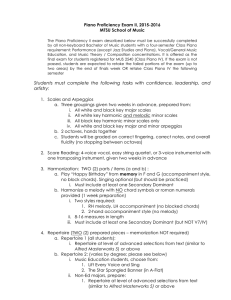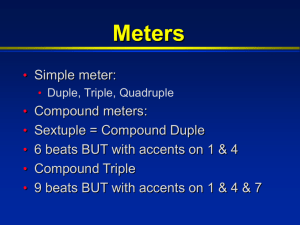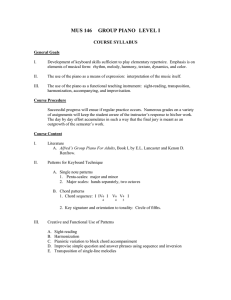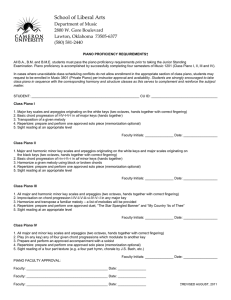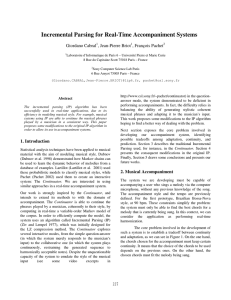Piano Proficiency Exam I, 2015-2016 MTSU School of Music
advertisement
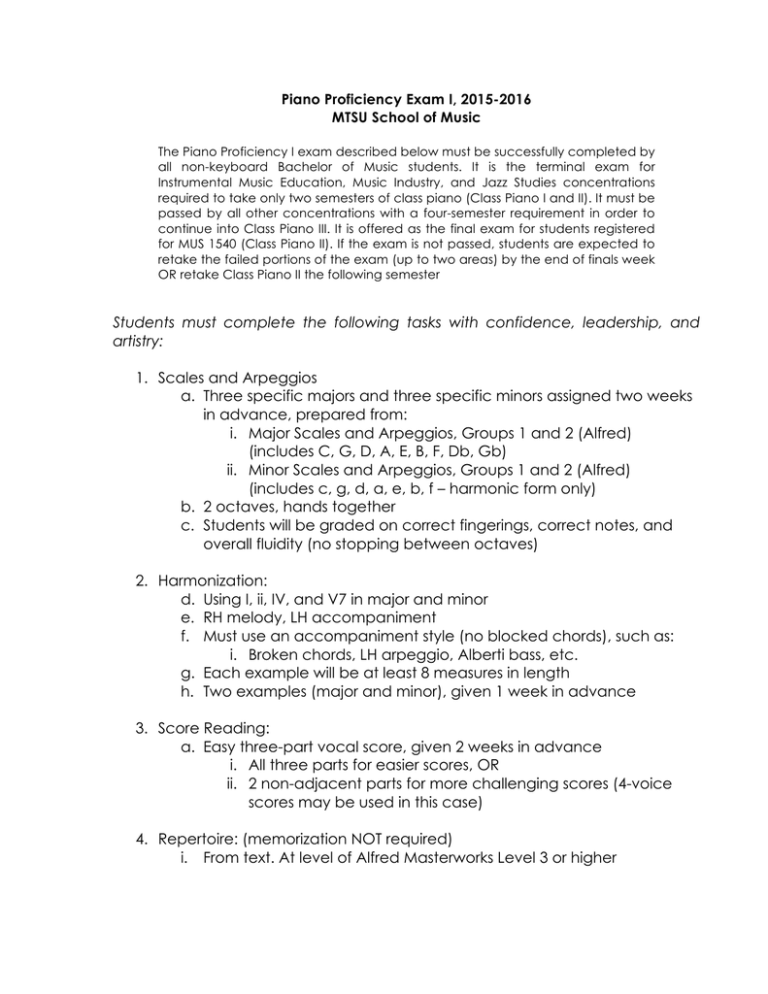
Piano Proficiency Exam I, 2015-2016 MTSU School of Music The Piano Proficiency I exam described below must be successfully completed by all non-keyboard Bachelor of Music students. It is the terminal exam for Instrumental Music Education, Music Industry, and Jazz Studies concentrations required to take only two semesters of class piano (Class Piano I and II). It must be passed by all other concentrations with a four-semester requirement in order to continue into Class Piano III. It is offered as the final exam for students registered for MUS 1540 (Class Piano II). If the exam is not passed, students are expected to retake the failed portions of the exam (up to two areas) by the end of finals week OR retake Class Piano II the following semester Students must complete the following tasks with confidence, leadership, and artistry: 1. Scales and Arpeggios a. Three specific majors and three specific minors assigned two weeks in advance, prepared from: i. Major Scales and Arpeggios, Groups 1 and 2 (Alfred) (includes C, G, D, A, E, B, F, Db, Gb) ii. Minor Scales and Arpeggios, Groups 1 and 2 (Alfred) (includes c, g, d, a, e, b, f – harmonic form only) b. 2 octaves, hands together c. Students will be graded on correct fingerings, correct notes, and overall fluidity (no stopping between octaves) 2. Harmonization: d. Using I, ii, IV, and V7 in major and minor e. RH melody, LH accompaniment f. Must use an accompaniment style (no blocked chords), such as: i. Broken chords, LH arpeggio, Alberti bass, etc. g. Each example will be at least 8 measures in length h. Two examples (major and minor), given 1 week in advance 3. Score Reading: a. Easy three-part vocal score, given 2 weeks in advance i. All three parts for easier scores, OR ii. 2 non-adjacent parts for more challenging scores (4-voice scores may be used in this case) 4. Repertoire: (memorization NOT required) i. From text. At level of Alfred Masterworks Level 3 or higher 5. Improvisation: a. A melody over a given chord progression which includes I, IV, & V7 b. ABA form: each section should be 8 measures long. For example: i. A: I, IV, I, V7 – I, IV, V7, I (4/4 time, D Major) ii. B: Change of key, time signature, or accompaniment style 1. 3/4 or 6/8 time, D Minor or B Minor, etc. iii. A(‘): Exact repetition of A section progression & meter. Melody may be the same or slightly different c. LH block chords (closest position) okay. Accompaniment style encouraged (as in harmonization) d. RH uses chord tones and simple rhythms only 6. Sight-Reading: j. Styles may include 2-voice, melody + chords, RH 2-voice with 1voice in LH k. Examples at least 8 measures in length l. Level of Mikrokosmos 1, Alfred Masterworks 1/2, Alfred Bk. 1 (text) Students must also be tested on (as quizzes) the following additional items at some point during the semester: § B-flat Instrument Transposition: o 4-8 measures in length o Example given one class period in advance § Chord progressions: o 1. Standard I, IV, I, V7, I (as found on pg. 170) § Closest position, all major/minor white and black keys, hands together o 2. Any chord progression from Alfred Group Piano Bk. I which uses the ii chord (pg. 242, for example) § Major and minor white keys only § Hands together
